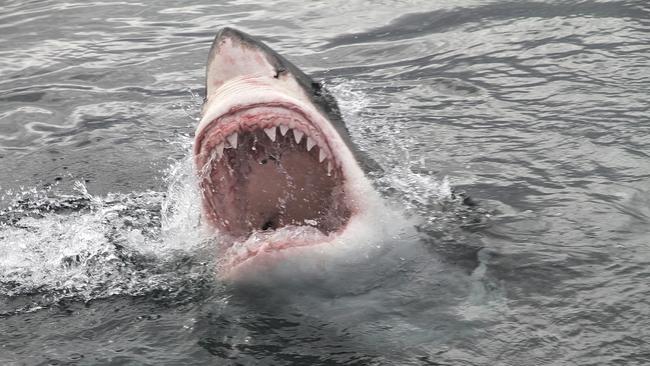Guardians of the Dead podcast: The shocking ways animals can kill
The shocking case of a woman who died after being pecked by a rooster is just one of many bizarre ways people have been killed by animals. Explore this grisly subject in the latest episode of Guardians of the Dead.
True Crime
Don't miss out on the headlines from True Crime. Followed categories will be added to My News.
WARNING: This podcast series features graphic descriptions of forensic pathology techniques, and descriptions of violent crimes, accidents and traumatic incidents that some listeners may find distressing or upsetting.
You’ve probably imagined some of the scenarios that might result in your untimely death.
But have you ever stopped to consider that fishing, collecting the eggs from the chook-house or shearing a sheep might be your last earthly activity before shuffling off life’s mortal coil?
Professor Roger Byard explores the unusual ways animals can kill in the latest episode of Guardians of the Dead, a forensic pathology podcast from The Advertiser and University of Adelaide.
We know all too well how easily sharks and crocodiles can kill. How about poultry?
LISTEN TO EPISODE 3 OF GUARDIANS OF THE DEAD
The podcast player is not loading correctly for some app users - if you do not see the player above, please go to this story in a web browser.
Prof Byard details the shocking case of an elderly woman who died after being pecked by a common backyard rooster on a visit to her chook yard.
“This was just an elderly lady who had very bad varicose veins,” he says. “This rooster went for her and just pecked her, and a couple of pecks through her varicose vein and she bled to death. It can happen”.
He also speaks about the shocking case of a 56-year-old man who was killed in Darwin in 2020 when a large mackerel launched itself into his boat, hitting him in the chest.
“It was jumping out of the water to get away from sharks and just flipped into him in the boat and this thing was more than 20kg and coming at speed, so that caused significant injuries”.
“There have been cases where people have been fishing and they put a fish bait in their mouth and turn around, joked and inhaled it, and blocked their airways.

“And from Africa there have been cases where people have actually drunk water from a lake that’s got leeches in it. The leech has lodged in the upper airway, and as it’s engorged itself it’s blocked off the airway.”
Prof Byard describes the killing capabilities of rams, camels, dingoes, elephants, cattle and chimpanzees but says most animal attacks happen closer to home.
“I think it comes down to dogs, because there are so many dogs around, and there are a lot of vicious dogs and it depends on the community, too.
“I have friends in Romania and the street dogs there are just vicious and they killed a Japanese tourist a few years ago, just nailed them in the street.

“So, we’re lucky here we don’t have that problem but any dog has the potential to actually cause injury because they’re animals and they’ve got a powerful bite.
“The most vulnerable ones in the community, of course, are kids. I think 70 per cent of the attacks are on kids. And there’s a couple of reasons for it. One is that kids tease dogs, and the second is that they’re small and vulnerable and dogs can really make a mess of children.”
“They have two ways of attacking, they can go for the head and the neck, and they can crush skulls, they can damage vessels in the neck. And what they do is (a) hold-and-pinch movement and then a shake, and that can cause tremendous injuries.”
GUARDIANS OF THE DEAD: TALES FROM THE MORTUARY
Prof Byard says it’s generally obvious when an animal, and specifically which kind of animal, has been responsible for causing someone’s death. But not always.
“One of the problems of animals is, you know, did they actually cause a death or did they just come across the body afterwards and that can be quite complicated.
“For example, a body is found that’s got shark bites. Well, did the shark just feed on the body after he drowned?

“Animals will feed on soft parts, so they sometimes go for the genitalia, so then it looks as if there’s been this sort of sadistic murder that’s occurred where it’s not.
“They’ll go for moist areas so if somebody has been shot or stabbed and the body’s in the house and there’s a dog and the dog’s hungry, or a cat, they’ll eat that area so they’ll completely modify the wound, so I can’t tell what sort of wound it was.”
Those cases call on all the problem-solving skills an experienced forensic pathologist can muster.
“We see stuff every couple of weeks that none of us have seen before.
“And we just have to research it and talk about it and what could this be? Could this be due to that? That’s one of the reasons why forensic is so fascinating because you’re constantly problem-solving.”



